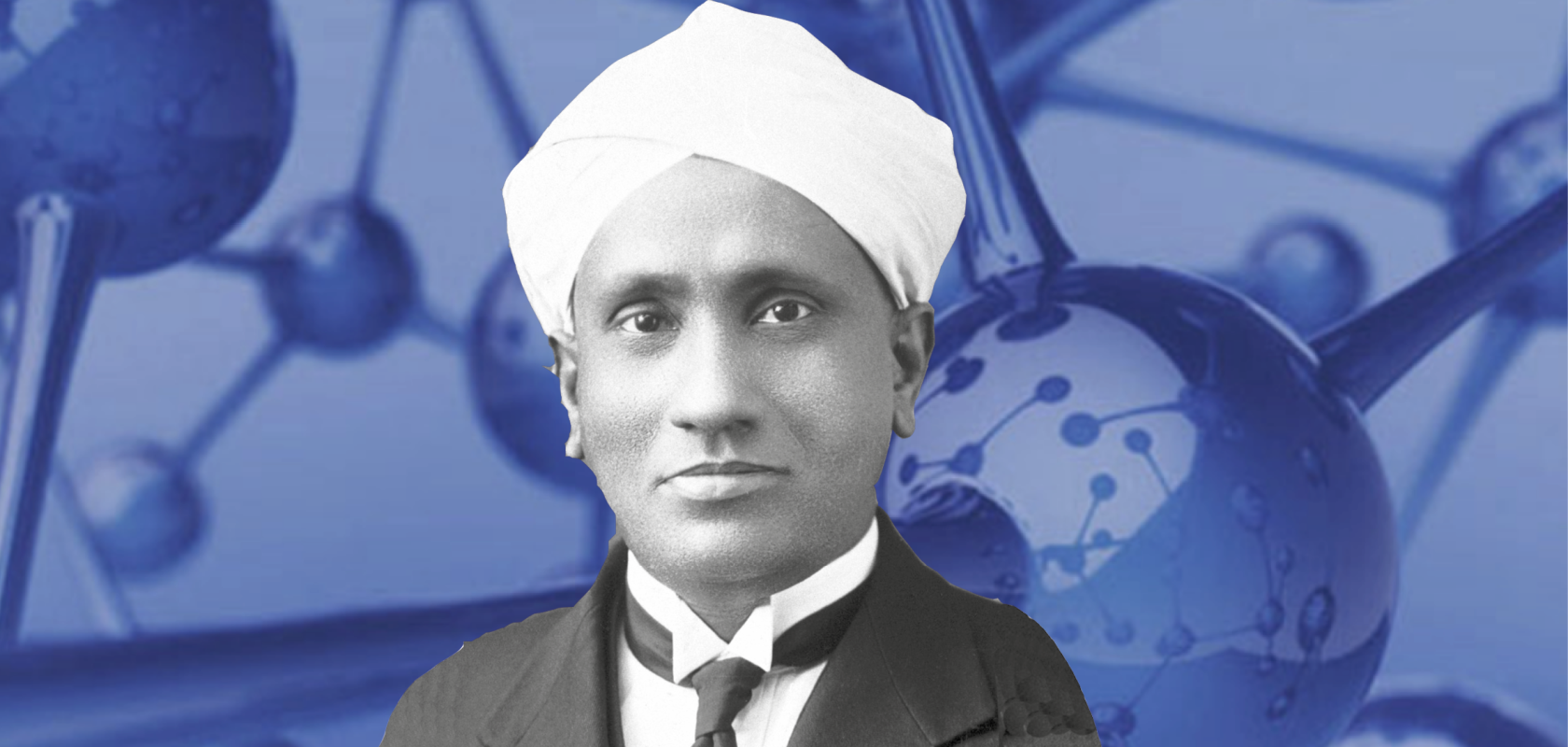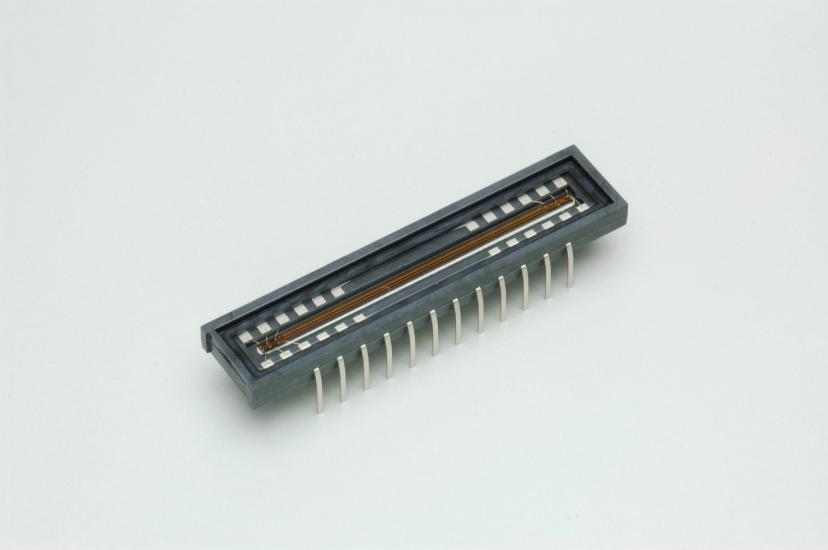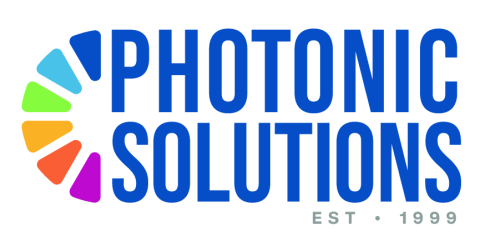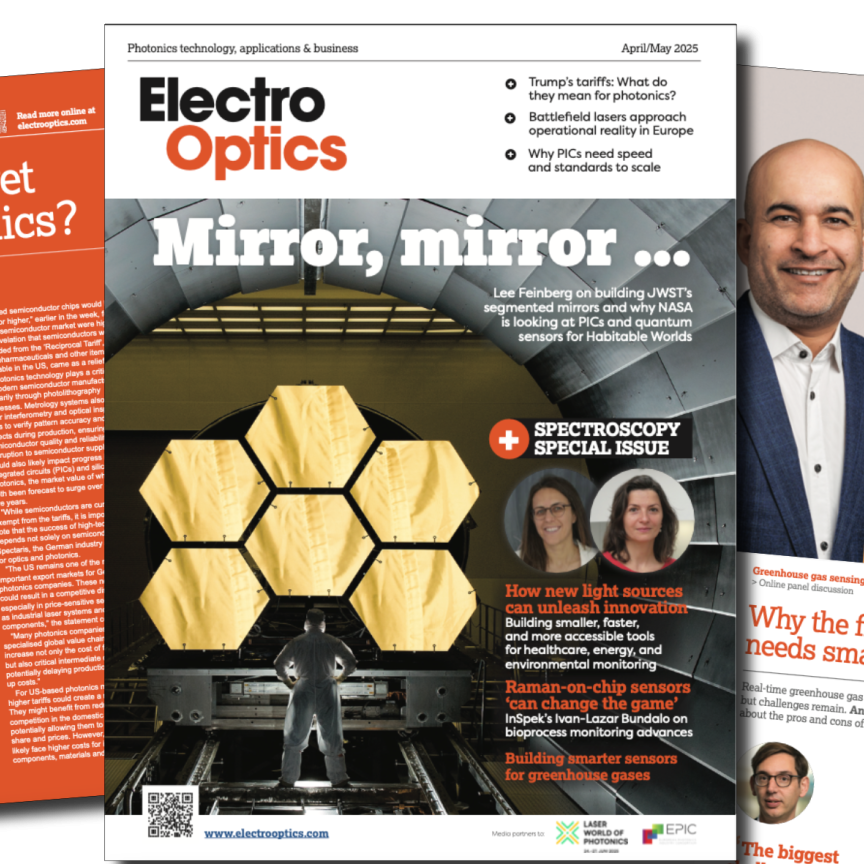The latest Raman spectroscopy products for 2024

The Indian physicist Sir Chandrasekhara Venkata (C.V.) Raman, who first discovered Raman scattering and developed Raman spectroscopy as an analytical technique. He was awarded the Nobel Prize in Physics in 1930 for his work, the first Indian to receive the award
Raman spectroscopy is a non-destructive analytical tool that uses light to reveal information about a sample's structure. According to the Raman Spectroscopy Report 2023 by 360 Market Updates, the global Raman Spectroscopy market size was valued at $610m in 2022 and is expected to pass the $1bn mark ($1011m) by 2028, a CAGR of 8.78% during the forecast period.
What is Raman spectroscopy?
When you shine a light onto a material, most of it simply bounces off unaltered (Rayleigh scattering), but a tiny fraction of the light (about 0.0000001%) has its wavelength altered by interacting with vibrations in the molecules of the sample. This is known as Raman scattering, named after the Indian physicist C.V. Raman, who discovered the effect in 1928.
Raman spectroscopy harnesses this scattering effect to analyse a sample's chemical make-up, through the use of a high-intensity light source and a detector. The light source is most often from a laser in the visible, near infrared, or near ultraviolet range, but it is also possible to use X-rays. The light interacts with molecular vibrations, phonons or other excitations in the system, causing the energy of the laser photons to be shifted up or down.

With(out) a Trace - we help you to find and resolve Raman signals
Raman spectroscopy is a technique of probing matter that requires little to no sample preparation. In a Raman spectrometer, a monochromatic light (near UV, visible, or near IR) illuminates a sample or analyte.
A typical Raman spectroscopy configuration requires a laser light source with a narrow spectral width and high wavelength stability, a spectrometer to disperse Raman scattered light, typically a polychromator with a diffraction grating, a detector with high sensitivity, and finally, an image sensor to detect the multiple wavelengths that are dispersed.
Hamamatsu provides a wide range of solutions, including spectrometers, InGaAs, and CCD / CMOS image sensors, and a Raman spectroscopic module incorporating a 785 nm laser, mini-spectrometer, and compact optical system. Its CMOS linear image sensor, S16596-4096-11, has a long pixel size (7x200μm), 4,096 pixels, a maximum data rate of 10MHz, low readout noise (typically 0.4 mV rms) and high dynamic range (5,000 times). It also has simultaneous charge integration for all pixels, variable integration time, an electronic shutter, and a built-in timing generator. It is an excellent choice for Raman spectroscopy applications.
SPONSORED BY

These changes in energy can then be plotted and give each sample a signature that reveals a sample's chemical makeup.
What are the steps of Raman spectroscopy?
- Illumination: A powerful laser beam illuminates the sample.
- Energy transfer: The light interacts with the vibrations of the molecule's bonds.
- Energy exchange: In most cases, the scattered light maintains the same wavelength (Rayleigh scattering). However, in a small portion of the cases (Raman scattering), the molecule either gains or loses energy from the light. This energy exchange alters the wavelength of the scattered light.
- Spectrum analysis: The scattered light is collected and analysed using a spectrometer. This instrument separates the light into its constituent colours (wavelengths). The Raman spectrum, a plot of intensity versus wavelength, is then generated.
Traditionally, photomultipliers were used for dispersive Raman set-ups, but many found that this meant long acquisition times. Developments in modern instrumentation led to notch or edge filters being used for laser rejection. Dispersive single-stage spectrographs (axial transmissive (AT) or Czerny–Turner (CT) monochromators paired with CCD detectors have become common, alongside Fourier transform (FT) spectrometers for use with near-infrared (NIR) lasers.

Hübner Photonics Cobolt 08-01 laser
Hübner Photonics manufactures high-performance lasers for advanced imaging, detection and analysis. The company’s Cobolt 08-01 Series of compact narrow linewidth lasers are specifically designed to meet the requirements within high-resolution Raman spectroscopy. Thanks to the innovative proprietary and patented optical design, best-in-class performance can be achieved when it comes to wavelength stability (<1 pm over 8 hrs, ±3 C), spectral bandwidth (<1 pm) and spectral purity (>40 dB at ± > 0.5nm and >80 dB at ± > 5nm from the main peak), three critical performance specifications for successful high-resolution Raman spectroscopy measurements.
This series of compact high-performance single frequency and narrow linewidth lasers covers 405 to 1,064nm, in a compact footprint, including integrated electronics. The lasers are manufactured using proprietary HTCure™ technology, which has been proven to provide a very high level of immunity to varying environmental conditions along with exceptional reliability.
SPONSORED BY

Raman spectroscopy applications
The Raman spectrum acts like a unique fingerprint for a molecule. By analysing the positions and intensities of the peaks in the spectrum, scientists can glean a vast amount of information about the sample, including:
- Identification: Raman spectra are excellent for identifying unknown materials. Libraries containing thousands of reference spectra allow scientists to compare an unknown sample’s spectrum with known compounds for a quick and accurate match. This is particularly useful in fields such as forensics, pharmaceutical analysis, and mineralogy.
- Chemical bonding: The Raman spectrum reflects the type of chemical bonds present in a molecule. By analysing the peaks, scientists can determine the functional groups (e.g., carbonyls, alcohols) and understand how atoms are linked within the molecule.
- Crystallinity: Raman spectroscopy can differentiate between crystalline and amorphous materials. Crystalline materials have a well-defined, ordered structure, while amorphous materials are more disordered. This distinction is crucial in fields such as materials science and pharmaceutical research.
- Phase analysis: Raman spectroscopy can identify different phases (e.g., solid, liquid, gas) of a material. This is valuable in studying materials under different conditions or monitoring chemical reactions.
What industries use Raman spectroscopy?
Raman spectroscopy is commonly used in biomedical research, such as studying proteins, DNA, and other biological molecules to understand diseases and develop new drugs, and in the petrochemical industry. It is also applied in the semiconductor Industry, to characterise the composition and quality of materials used in electronics. It has also found uses in gemology, in identifying precious stones and detecting fakes and in art conservation, to analyse pigments and paints.
Mirrorless Raman technology miniaturises label-free, non-contact sample interrogation
Lightnovo’s MiniRaman spectrometer is an advanced miniaturised Raman spectrometer with an integrated, patented, reference channel. This technology allows for an automatic calibration of the unstabilised laser wavelength drift, so the spectrum from the sample is always corrected for Raman shift and Raman intensity. This allows for a continuous calibration of the device and for fast and reliable results.
Available in the UK and Ireland from Photonic Solutions, the MiniRaman spectrometer measures only 25 x 30 x 105mm, weighs just 400g (200g when in an aluminium housing) and can integrate up to two lasers at 660nm and 785nm, laser beam delivery optics, set of sample probes, Raman beam delivery optics, electronics, battery and housing. The 785nm laser covers the fingerprint region from 400-2700cm-1 and the 660nm laser extends the spectral range to 2700-4500cm-1. The MiniRaman has an extremely high total Raman signal throughput from sample to detector (~89%), spectral resolution 10-15 cm-1 (depending on a spectral range) and wavenumber accuracy to ±2.5 cm-1.
SPONSORED BY

Advantages of Raman spectroscopy
- Non-destructive: Samples remain intact after analysis.
- Rapid analysis: Raman spectra can be acquired in seconds or minutes.
- Water compatibility: Raman spectroscopy works well with water-based samples.
- Minimal sample preparation: Often, minimal preparation is needed for analysis.
Limitations of Raman spectroscopy
- Weak signal: Raman scattering is a relatively weak process, requiring powerful lasers and sophisticated equipment.
- Fluorescence interference: Some materials fluoresce, which can obscure the Raman signal.
Raman spectroscopy continues to evolve, with advancements in lasers, detectors, and data analysis leading to even more powerful applications. As scientists unlock the full potential of this technique, it will remain a vital tool for unravelling the mysteries of the molecular world.

Spectrogon optical filters, coatings and gratings for Raman spectroscopy
Spectrogon designs and manufactures optical interference filters for several applications such as medical, process industry, thermal imaging, power distribution and surveillance, and defence. Spectrogon offers optical filters and windows in the range 400-14,000nm and has production capability for wafer sizes Ø6 to Ø200mm.
The wafers can be diced to required size and delivered on tape frames. Bandpass, narrow bandpass, longwave-pass, shortwave-pass, broad-bandpass and neutral density filters can all be produced after customer’s required specifications. Each filter is designed with advanced state of the art technology with production in Sweden. Spectrogon also manufactures anti-reflection, high reflective coatings and holographic gratings, which are widely used in laser scattering studies, such as Raman spectroscopy and Thomson scattering for plasma diagnostics. Spectrogon has several different coating machines for volume productions.
SPONSORED BY

Raman spectroscopy product suppliers
The following vendors provide products and solutions for Raman spectroscopy. If you would like your company included, please let us know at: editor.electro@europascience.com
Agilent Technologies The company develops technologies and products for Raman spectroscopy that have been supplied for applications in airport security, hazardous chemical identification and pharmaceutical quality control.
APE Angewandte Physik und Elektronik offers the picoEmerald system, which facilitates stimulated Raman scattering (SRS) microscopy. It allows simple spectroscopic identification of the samples’ fingerprint region based on Raman spectra databases. Imaging at high video rates is possible due to short integration times of the SRS detection module (lock-in amplifier).
Available from Avantes is the AvaRaman range, which combines its AvaSpec range of spectrometers with a 532nm or 785nm laser. The spectrometers are appropriately configured according to the wavelength of the laser. The power of the laser source is adjustable via software. AvaRaman systems are equipped with cooling systems and delivered with AvaSoftRaman software.
B&W Tek has two lines of handheld Raman spectrometers: TacticID and NanoRam. TacticID is specifically geared toward unknown material identification in the safety and security field, where users are encountering unknown substances they need to identify for personal and public safety reasons. NanoRam is designed for pharmaceutical users, offering 21 CFR part 11 compliance and giving users the ability to identify incoming raw materials, as well as finished dosage products.
CNI Laser offers combined Raman spectroscopy systems. The range includes portable Raman spectrometers and a micro Raman spectrum measurement system. The available wavelengths are 405nm, 532nm, 785nm and 830nm.
Cobolt offers a broad range of compact lasers that are suited to high-resolution Raman spectroscopy applications. Stable single-frequency operation combined with the robust thermomechanical architecture of HTCure provides narrow linewidths over a large range of operating temperatures, low spectral drift and a spectral purity guaranteed better than 80dB.
Coherent supports Raman spectroscopy and imaging with narrow-line lasers across the entire visible spectrum, with output power from milliwatts to Watts. The ThZ Raman range includes both integrated and modular systems to help access structural information only found in the low frequency region of Raman; to easily identify polymorphic forms or quantify the degree of crystallinity of materials.
The RM5 from Delta Photonics is a compact and fully automated Raman microscope for analytical and research purposes. It is designed to be truly confocal, with variable slit and multiple position-adjustable pinhole for higher image definition, better fluorescence rejection and application optimisation.
Horiba Scientific has more than 50 years of experience in Raman. The company provides complete Raman spectroscopy solutions for analytical measurements, research Raman, UV Raman, QC/QA and industrial Raman applications. These include Raman spectrometers, hybrid Raman systems (such as AFMRaman), modular Raman systems, transmission Raman analysers, dedicated in-situ process Raman spectrometers, and miniaturised Raman instruments for high volume OEM manufacturers.
Integrated Optics supplies continuous-wave (CW), single-longitudinal mode (SLM) lasers with all the most frequently used wavelengths for Raman spectroscopy: 405nm, 488nm, 532nm, 633nm, 785nm, 830nm, 1030nm and 1064nm.
Klar Scientific’s instruments target scientists and engineers with more modest budgets, whose primary interest is in photoluminescence but who occasionally need to make a Raman measurement as well. The company provides a Raman spectroscopy kit at 532nm, which includes a powerful laser and more sensitive spectrometer. For users whose needs span multiple types of spectroscopy, Klar’s reconfigurable, modular instruments can be a cost-effective solution.
Laser Quantum manufactures suitable lasers for Raman spectroscopy, including 473, 532, 660 and 671nm wavelengths. The Gem family is ideal for OEM integration, whilst Ventus lasers are better suited to scientific and research applications.
Nanobase provides total solutions for Raman spectroscopy research and other material analysis techniques. Its product range includes the XperRF hybrid micro Raman instrument, XperRAM S and C series of micro Raman instruments and XperRAM M series of macro Raman instruments.
Ocean Optics offers a range of QE Pro Raman+ spectrometers, designed to provide low limits of detection for trace level materials identification in set-ups using Raman excitation lasers at key wavelengths between 532 and 1,064nm. Optical advancements have unlocked 3x sensitivity improvement and expanded spectral coverage compared with previous modular Raman spectrometers.
RPMC Lasers offers a wide range of wavelength-stabilised and single-frequency laser sources for Raman spectroscopy. Additionally, a wide range of pulsed laser sources are available for coherent Raman spectroscopy, such as SRS and CARS.
Toptica Photonics offers several products fulfilling the requirements of Raman spectroscopy, particularly newer applications that require pulsed laser sources operating in the femto- and picosecond regime. Its FemtoFiber laser family is widely used in various broadband CARS and SRS applications.
Wavelength Electronics supplies a number of components necessary for ultra-stable laser output when using Raman spectroscopy. Providing up to 3A of current with 200 ppm stability, the WLD3343 laser diode driver delivers the well-defi ned current required. Pairing this current source with the WTC3243 temperature controller ensures the operating temperature of the laser stays consistent, minimising the eff ect that temperature fluctuations have on laser wavelength.
Wasatch Photonics manufactures high throughput UV-VIS-NIR spectrometers. The company says that the f/1.3 fibre coupled spectrometers have 10 times more throughput compared to rival f/4 spectrometers and are ideal for the characteristically weak signals involved in Raman spectroscopy. Solutions include Raman spectrometer systems with integrated laser, modular Raman spectrometers, OEM spectrometer units and Raman probes. Wasatch Photonics Raman spectrometers and spectroscopy systems are available via distribution partner, Pro-Lite Technology.
This is not an exhaustive list. If you provide products and solutions for Raman spectroscopy and would like your company included, please let us know at: editor.electro@europascience.com

